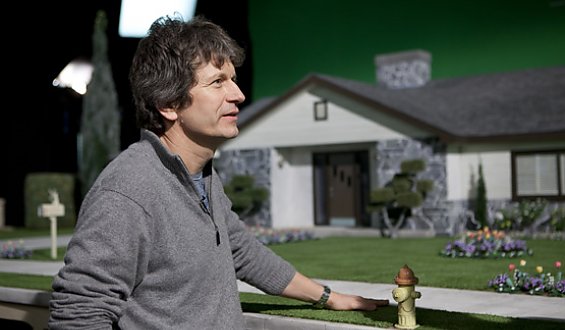ABOUT RICK HEINRICHS
An animator and production designer best known for his creative alliance with Tim Burton, Rick Heinrichs has done visually interesting and evocative work in capacities ranging from stop-motion animation to set design on films as varied as "Pee-Wee's Big Adventure" (1985) and "Fargo" (1996). Like Burton, Heinrichs studied animation at the California Institute of the Arts and was recruited by Walt Disney Productions. The two collaborated on Burton's stop-motion animation short "Vincent" (1982) and the live-action "Frankenweenie" (1984), before teaming up on Burton's unforgettable feature debut "Pee-Wee's Big Adventure", with Heinrichs serving as the film's animation effects supervisor. Before reprising his work in this capacity, perfecting animation-aided special effects with a visual effects consulting role on Burton's "Beetlejuice" (1988), Heinrichs branched out, doing stop-motion animation for "The Adventures of Buckaroo Banzaii: Across the 8th Dimension" (1984) and supervising the models and miniatures for the Maurice Sendak-designed "Nutcracker: The Motion Picture" (1986).
Heinrichs made his debut as set designer with Ivan Reitman's sequel "Ghostbusters II" (1989). He followed up as art director of "To the Moon, Alice", a "Showtime 30-Minute Movie", and returned to set design duties on the features "Joe Versus the Volcano" and "Edward Scissorhands" (both 1990). While many of the films the designer worked on were Tim Burton movies, even those that were not bore Heinrichs' indelible mark, incorporating lively, almost surrealistically vibrant visuals from which the often over-the-top characters seemed to pop out. Even less fantastical films like "Soapdish" and "The Fisher King" (both 1991), with Heinrichs as assistant art director and set designer, respectively, had this vivid, extra animated feel.
Heinrichs' production designs often incorporated a darker color scheme than most other films, a feature that he used to good effect, evincing drama, danger and otherworldliness. He particularly excelled in this mode as art director of Burton's "Batman Returns" (1992). While the film's dark palette was similar to its predecessor, the crisp, cartoon-inspired settings of the sequel offered some well-needed contrast. The result was a film that used darkness to an atmospheric advantage, rather than a hindrance, a problem that arguably plagued "Batman" (1989). As art director of "Last Action Hero" (1993) Heinrichs merged this fluency with darkness with a masterful use of bright primary colors that captured the feeling of being transported into a film that rests at the otherwise disappointing movie's core. That same year he was a visual consultant on the stop-motion animation masterpiece "Tim Burton's The Nightmare Before Christmas", working closely with Burton and animators to bring life to the director's vision.
In 1996, after working as supervising art director of the fantasy-adventure "Tall Tale: The Unbelievable Adventures of Pecos Bill" (1995), and designing Showtime's popular noir anthology series "Fallen Angels", Heinrichs moved in a different direction, joining the team of the Coen brothers' comedic mystery "Fargo". Here his flair for the visually interesting had to be entirely squelched, as the Coen's requested a set with absolutely no visual interest or charm. He rose to the challenge of this admittedly tall task, and ended up with a look that pleased the brothers as well as critics and audiences, who applauded the simplicity of the sparse Minnesota landscape. Even here, with such minor visuals, Heinrichs' touch added the needed hyper-realism. He reteamed with the Coen brothers on the contrasting, visually busy comedy "The Big Lebowski" (1998). Referencing the odd vividness of Los Angeles architecture and design, specifically that of the 1950s and 60s, Heinrichs scouted appropriate locations for the film, and additionally built sets on a soundstage, that worked almost as characters in the film, bringing out traits of the players and aiding plot points.


